Energy-aware cooperative spectrum sensing for underground cognitive sensor networks
LIANG Quan-quan
(College of Information and Electrical Engineering, Shandong University of Science and Technology, Qingdao 266590, China)
With the development of wireless communications and electronics technologies, wireless sensor networks (WSNs), have been widely used for environment monitoring in underground coal mine and attracted more and more attention[1].Curecently, IEEE802.15.4 standard[2]for low-rate wireless personal area networks (WPANs) is generally considered as one of technology candidates for WSNs[3], which can operate in any one of three frequency bands: around 868 MHz, 915 MHz, and Industrial, Scientific and Medical (ISM) band at 2 450 MHz.The unlicensed 2.45 GHz ISM band can host various networks with different standards, such as IEEE 802.11g wireless local area networks (WLANs), IEEE 802.16e wireless metropolitan area networks (WMANs) and IEEE 802.15.4 WPANs.Thus, the coexistence of these networks challenges the reasonable and efficient use of the scarce spectrum.
Fortunately, cognitive radio technique has been proposed to implement opportunity sharing.It can not only sense the spectral environment over a wide frequency band, but also opportunistically provide wireless links according to spectrum sensing information, which satisfies the user communications requirements optimally[4].Concerning the devices operating in 2.45 GHz ISM band, the output power of 802.15.4 sensor nodes is very low, whereas the output power of 802.11g or 802.16e devices is very large.So using cognitive radio technique in wireless sensor networks will avoid the interference from other wireless users and improve the utility of scarce spectrum.
Both wireless sensor networks and cognitive radio are very hot research topics.The coexistence of 802.11 WLANs and 802.15.4 sensor networks in ISM band was investigated in Ref.[5].Pollin et al.proposed some distributed adaptation strategies for 802.15.4 sensor nodes to minimize impact of 802.11 interference.The proposed algorithms are based on increased spectrum scanning (at the cost of energy consumption and additional hardware requirements) or increased learning[6]to consider the lifetime maximization problem in wireless cognitive radio sensor networks.A joint design of cognitive radio and multi-carrier modulation to achieve high power efficiency was presented.In Ref.[7], a sensor-network-based sensing architecture was introduced that not only overcomes the issues identified, but also addresses the interference temperature model effectively.
In cognitive radio sensor networks, spectrum sensing must be performed before the sensor nodes access the spectrum to avoid the interference from the other wireless users[8].In order to improve the reliability of the spectrum sensing, cooperation among sensor nodes need to be introduced.This spatial diversity can alleviate the problem of unreliable detection by single node.It should have a better chance of detecting the existence of other users through cooperation hence to avoid the interferences.However, too many sensor nodes involved in the sensing will result in excess energy consumption.To the best of our knowledge, the most important consideration is energy efficiency when a wireless sensor network is designed.On the other hand, for cognitive radio, a satisfactory sensing performance is a key target.Both of these characteristics should be considered in cognitive radio sensor networks.In this paper, according to the precondition that the detection performance should be satisfied, we take energy efficiency and energy consumption balance into account.The relationship between energy consumption and detection performance is analyzed.As a result, a detection schedule matrix is proposed for the cooperative sensing in cognitive radio sensor networks.
The paper is organized as follows.System model is introduced in section 1.In section 2, we first analyze the relationship between energy consumption and detection performance using energy detector for a single node.Then, we use voting fusion rule for the final detection decision making.The relationship between the final detection performance and energy consumption is analyzed.Finally, we conclude the paper in section 3.
1 System model
We consider a cluster-based 802.15.4 wireless sensor network shown in Fig.1, wherensensor nodes and one cluster head are involved in the cluster.The sensors may operate in one frequency channel among 16 possible ones for 802.15.4 networks operating in 2.45 GHz ISM band.The center frequency of these channels is defined as
Fc=2 405+5i, i=0,1,…,15.
(1)
The measurement unit ofFcis MHz.The sub-bandwidth of each channel is 2.0 MHz.Due to the coexistence of multiple standards, there may be some other wireless users (e.g., WLAN/WMAN users, called primary users hereafter) occupying some of the channels.In order to avoid the interference caused by these users, the sensor network first detects the 16 spectrum bands.The ones not occupied will be used by the sensors for communication.Cooperative sensing is employed, not only to improve the detection performance, but also to reduce each node’s energy consumption and balance the whole network.The cluster head, which has stronger processing ability and energy storage, is responsible for scheduling the sensors to sense the spectrum.Assuming that the prior knowledge of the primary users is unknown, the sensors exploit the energy detector[9]for local spectrum sensing, and make binary hypothesis that local decision about whether a certain channel is occupied or not.Then the cluster head collects these local decisions to make a final one.Basic assumptions in our research are listed as follows:
1) All users experience additive white Gaussian noise (AWGN) channels.
2) Uniform energy detectors are placed in the sensor nodes.
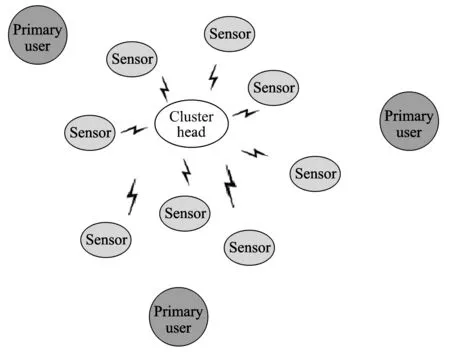
Fig.1 Cluster-based cognitive sensor networks
2 Energy-aware cooperative spectrum sensing
In most cases, the sensor nodes are powered by batteries that can not be replaced.The energy efficiency is the crucial prerequisite in designing the wireless sensor networks.Hence, different from other cognitive radio systems, the cognitive radio sensor networks are more sensitive to energy consumption.So in this section, we consider the energy-aware cooperative spectrum sensing strategy.Firstly, we give the relationship between detection time, which impacts the sensing energy consumption directly and the local detection performance.Moreover, the relationship between the final detection performance using voting fusion rule and energy consumption is analyzed.
2.1 Local sensing
For each sensor node, we consider the condition of detecting the presence or absence of signals from the primary users in 16 interest bands.By sampling the band of interest at Nyquist rate, a binary hypothesis testing problem is adopted aiming to distinguish the following hypotheses:
H0:x[n]=w[n]
n=0,1,…,N-1,
H1:x[n]=s[n]+w[n]
n=0,1,…,N-1,
(2)

For energy detector, we can describe decision statistic as
(3)
whereλis decision threshold.In this case[10],
(4)
Then the probability of detection and false alarm can be generally computed by
Pd=Pr{T(X)>λ; H1}=
Pf=Pr{T(X)>λ; H0}=

(5)
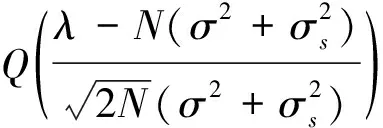
N=2[(Q-1(Pf)-Q-1(Pd))SNR-1-Q-1(Pd)]2,
(6)
According to Nyquist sampling theorem, the least sensing time of each sensor node is given by

(7)
whereWis the bandwidth of the interest band.
Thus, we can get the least energy consumption of a single node according to the detection performance requirements ofPdandPf,
wherePsenis sensing power of the sensor node, and in most cases it equals the receiving power.Fig.2 shows the energy consumption according to different requirements of detection, wherePsen=48 mW,W=2 MHz.
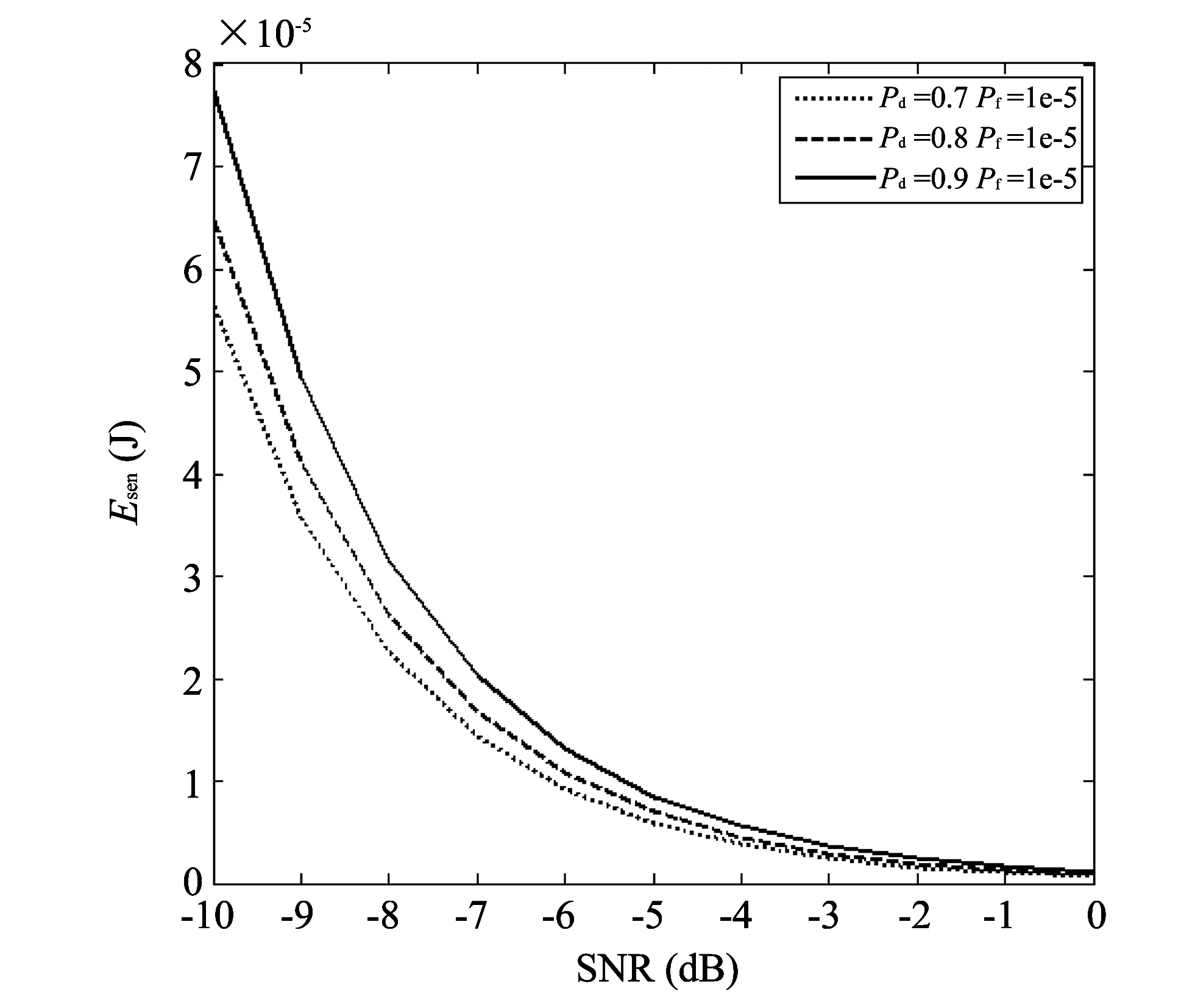
Fig.2 Energy consumption for local sensing according to detection performance requirements
2.2 Final decision making
To minimize transmission energy consumption and overhead of sensing data, every sensor node will transmit 1-bit local sensing decision to the cluster head for fusion.
Considering the energy and processing constraint of the sensor nodes, in this paper we will use voting fusion rule[11]for simplification.
For ann-sensor cluster, the final sensing decision is given by
(9)
whereuiis the local decision made by thei-th sensor.The fusion rule means that when at leastkout ofnsensor nodes detects the primary user, the cluster head decides that the primary user is present.In this case, the detection and false alarm probability of the final decision are obtained as

(10)
It is obvious that the value ofkwill affect the detection probability and false alarm probability of the final decision.In the case ofk=1, the voting rule turns to be OR rule.Moreover, the rule turns to be AND rule whenk=n.
Simulation results are presented in Fig.3 to evaluate the energy consumption vs.Pd_finalwith different values ofk.In the simulation, we take a 10-sensor cluster as an example.The final probability of false alarm is fixed to be 10-6.Other parameters are set asPsen=48 mW,W=2 MHz andSNR=3 dB.The energy consumption is defined as the sum of energy consumed by the nodes.From Fig.3, we can find that the energy performance becomes better and better askdecreases.Whenk=3, the energy performance achieves the best.
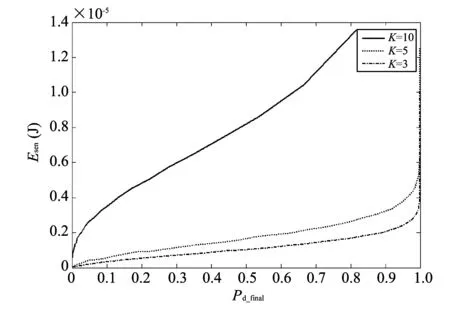
Fig.3 Energy consumption vs.final detection probability using voting fusion rule
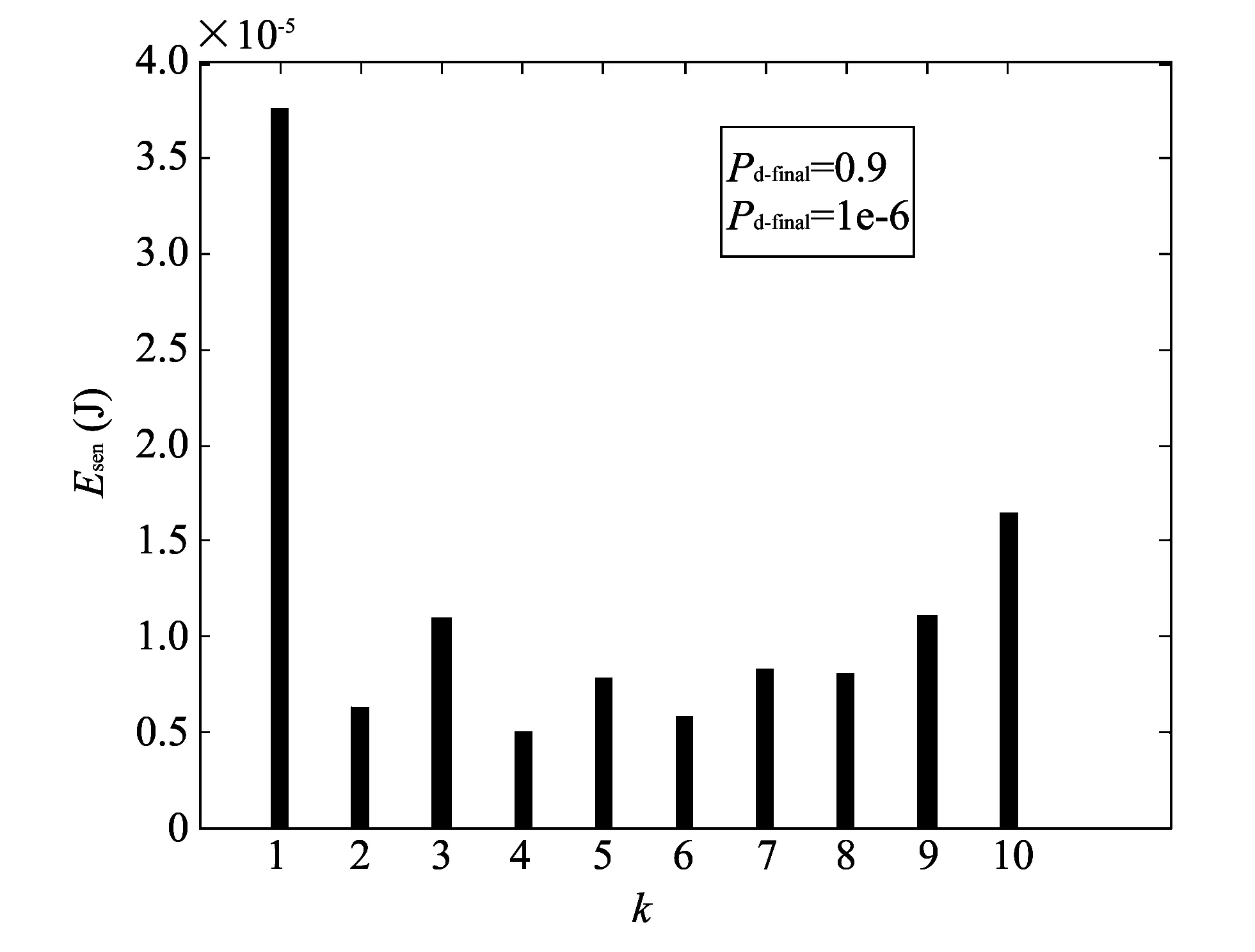
Fig.4 Average energy consumption at different value of k
However, the simulation above is just for detection one time, and simulation results shown in Fig.4 gives the performance of average energy consumption for each node with the detection of 50 times.In this case, we can find that for a certain value of the total detection probability, whenk=1, the performance of the average energy consumption for each node is not the best.There is no obvious trend for the average energy consumption, which means the energy consumption among the sensor nodes is lopsided.
3 Conclusion
In design of the underground cognitive radio sensor networks, both the characteristics of cognitive radio systems and wireless sensor networks should be considered.In this paper, we consider a cluster-based cognitive radio wireless sensor network which is established on IEEE 802.15.4 standard.We explore a design for the tradeoff energy efficiency and detection performance after cooperative spectrum sensing in such a network.At first, we investigate how to fix the detection time for the sensing according to the detection performance requirements.Then, the voting fusion rule is adopted for the final decision making.Finally, the relationship between the final detection performance and the energy consumption is analyzed.
[1] Akyildiz I F, SU Wei-lian, Sankarasubramanian Y, et al.A survey on sensor networks.IEEE Communications Magazine, 2002, 40(8): 102-114.
[2] IEEE Std 802.15.4-2003.IEEE standard for information technology-telecommunications and information exchange between systems-local and metropolitan area networks specific requirements part 15.4: wireless medium access control (MAC) and physical layer (PHY) specifications for low-rate wireless personal area networks (LR-WPANs).2003.
[3] Gutiérrez J A, Callaway E H, Barrett R L.Low-rate wireless personal area networks.IEEE Press, 2004.
[4] Haykin S.Cognitive radio: brain-empowered wireless communications.IEEE Journal on Selected Areas in Communications, 2005, 23(2): 201-220.
[5] Pollin S, Ergen M, Timmers M, et al.Distributed cognitive coexistence of 802.15.4 with 802.11.In: Proceedings of the 1st International Conference on Cognitive Radio Oriented Wireless Networks and Communications, Mykonos Island, Greek, 2006: 1-5.
[6] GAO Song, QIAN Li-jun, Vaman D R, et al.Energy efficient adaptive modulation in wireless cognitive radio sensor networks.In: Proceedings of IEEE International Conference on Communications, 2007: 3980-3986.
[7] Nandagopal S, Cordeiro C, Challapali K.Spectrum agile radios: utilization and sensing architectures.In: Proceedings of the 1st IEEE International Symposium on New Frontiers in Dynamic Spectrum Access Networks, Baltimore, USA, 2005: 160-169.
[8] Cabric D, Mishra S M, Brodersen R W.Implementation issues in spectrum sensing for cognitive radios.In: Proceedings of Asilomar Conference on Signals, Systems and Computers, Pacific Grove, CA, USA, 2004: 772-776.
[9] Urkowitz H.Energy detection of unknown deterministic signals.In: Proceedings of the IEEE, 1967, 55(4): 523-531.
[10] Proakis J G.Digital communications.4th edition.New York: McGraw Hill, 2000.
[11] Klein L A.Sensor and data fusion concepts and applications.Society of Photo-Optical Instrumentation Engineers (SPIE), Bellingham, WA, USA, 1999.
 Journal of Measurement Science and Instrumentation2014年1期
Journal of Measurement Science and Instrumentation2014年1期
- Journal of Measurement Science and Instrumentation的其它文章
- Error separation in CMM coordinate metrology
- Design and theoretical analysis of test system for propellants’ gas pressure in warhead
- A new probe for atmospheric electric field mill
- Experimental analysis of high temperature capacitance variance of MLCC
- Application of RLS adaptive filtering in signal de-noising
- QIM digital watermarking based on LDPC code and message passing under scaling attacks
